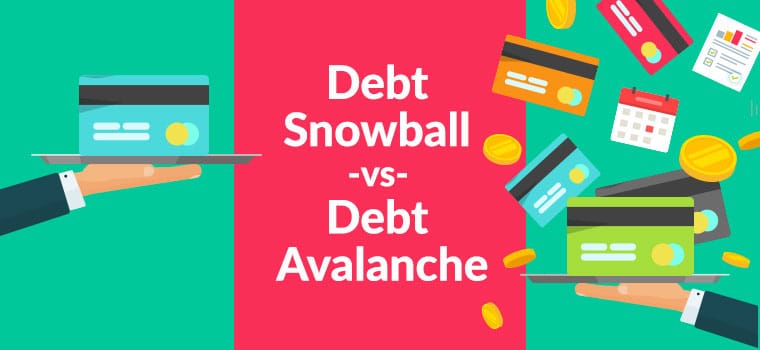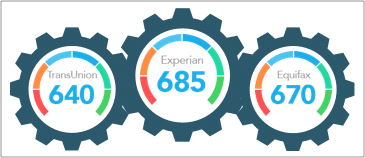Depending on the amount of debt you owe and the number of accounts that need to be reconciled, a debt reduction strategy may be key to making the most progress toward achieving a zero balance on your accounts.
Here are two general approaches you can take: debt snowball or debt avalanche. Read on to decide which method will work best for you.
Debt Snowball: Keep Progress Rolling
With the debt snowball approach, you’ll start by listing out your debts in order of smallest to largest.
After making minimum payments on every account, focus on paying off the smallest amount first, even if another card has a higher interest rate. Put any extra money toward paying off that account, and once that debt is gone, you move your focus to paying off the next smallest account.
For example, let’s say you have these three debts:
- $10,000 auto loan, $150 payment
- $4,000 credit card, $125 payment
- $1,000 credit card, $75 payment
With the debt snowball method, you’ll focus on paying off the $1,000 credit card first because it’s the smallest balance. After making the minimum payments on all three debts, put any extra money you have toward the $1,000 credit card. For example, if you make the regular $75 payment plus an extra $125 every month, that credit card principal balance will be paid off in five months.
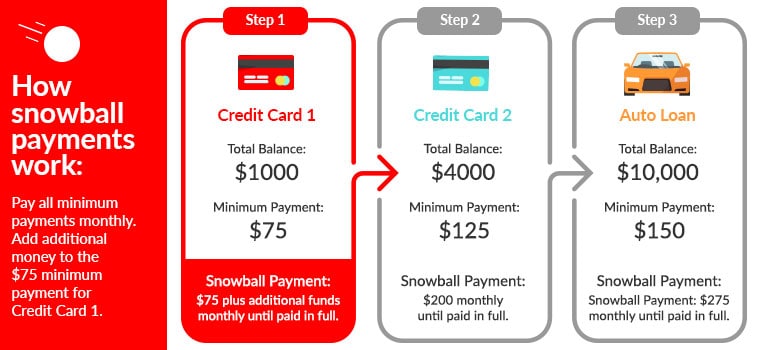
Once the $1,000 credit card debt is gone, you can take the $75 you were paying toward it and any extra money and apply it to the $4,000 credit card. This means you’ll now be paying $200 or more each month instead of $125 to pay down that account.
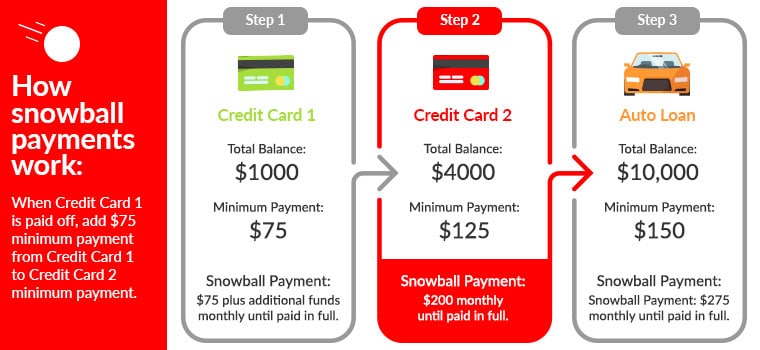
The idea behind debt snowball is that once you get rolling, you’ll pick up momentum to continue making progress to pay off all outstanding debt.
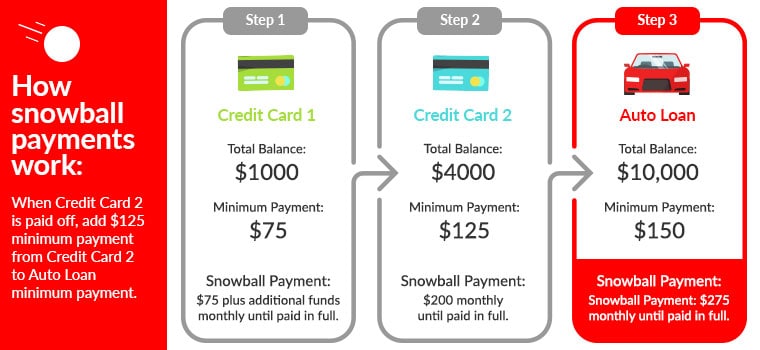
Debt Avalanche: Paying Down Expensive Interest
With the debt avalanche approach, you’ll make the minimum payment on every account, and then use extra money to pay off the account with the highest interest rate first. Once that’s paid down, you move to the account with the next-highest interest rate.
By eliminating the highest interest rate accounts first, you’ll save more money over the course of your payment strategy. However, if the account with the highest interest rate is also the one with the largest balance, be patient because it’ll take longer to see results. (This is why people tend to be more motivated with the debt snowball approach.)
Staying Committed to Debt Payments
With both the debt snowball and debt avalanche approach, the key to success is committing to paying down the balance on time every month without fail. Because payment history is 40% of your credit score, it’s vital that you never miss a deadline.
Beyond paying the minimum amount every month, both approaches require using additional funds (like from a bonus, tax return, gift, or secondary job) to speed up the process of reaching a zero balance.
When you allocate this extra money to paying off debt, you’ll see results faster and be that much closer to a debt-free future.

